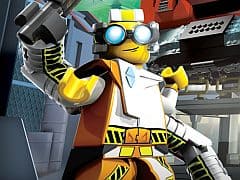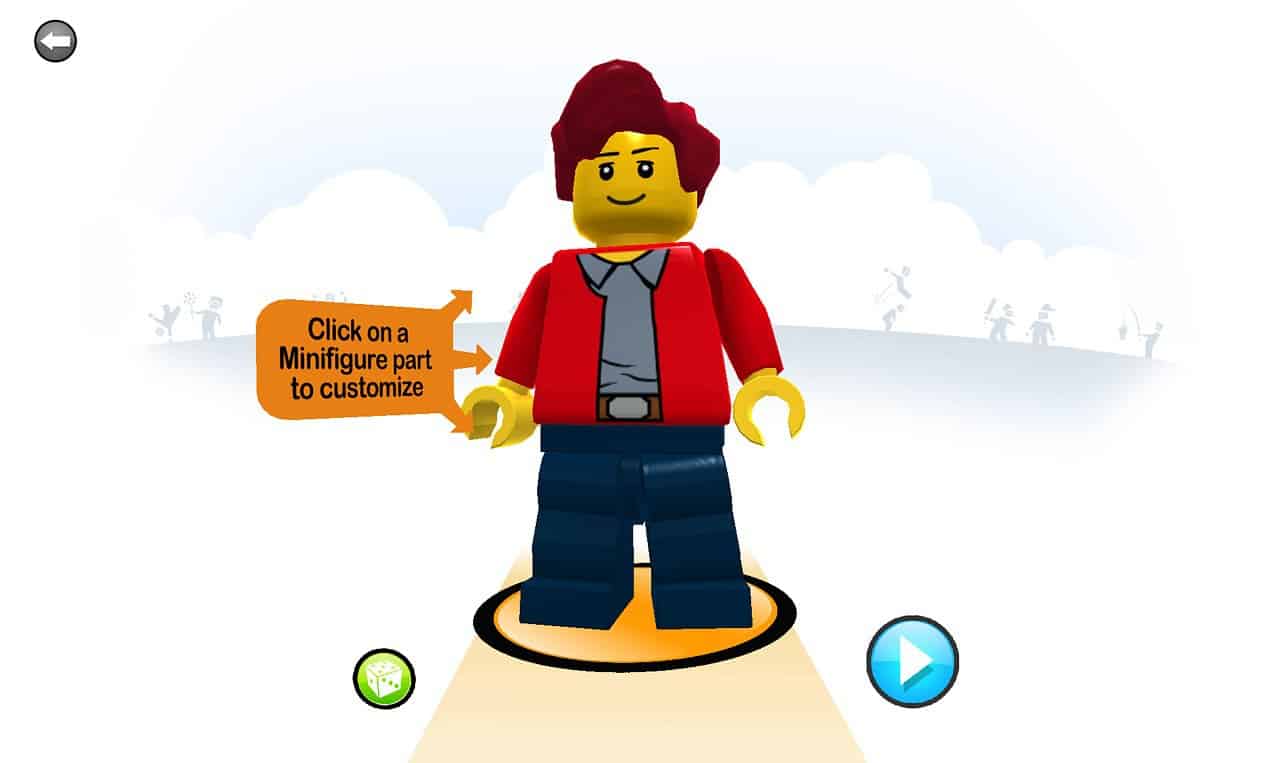You can trust VideoGamer. Our team of gaming experts spend hours testing and reviewing the latest games, to ensure you're reading the most comprehensive guide possible. Rest assured, all imagery and advice is unique and original. Check out how we test and review games here
Remember the Six Million Dollar Man? For most of you it was a bit before your generation, unless you’ve gawked at clips of it over on YouTube, but you ought to recognise the catchphrase regardless: “We can rebuild him. We have the technology”. Man needs to be rebuilt, is the gist of it. $6m was thrown at the guy and yet I can’t help but think Lee Majors would have looked better if he was remade entirely out of Lego.
And with that tenuous link I bring you Lego: Universe, a game that encourages you to think in terms of creation via bits of Lego. Building blocks are a simple idea, but Lego: Universe extends its conceit to an MMO scale and offers something that hints at the Second Life formula. What you have are worlds made of Lego, populated by Lego men and ladies, all of whom are building in-game objects out of Lego. To put it simply, it’s a multiplayer game for fans of user-generated content, for kids.
But the game expands into more traditional MMO territory with the addition of missions and combat zones. Even its premise is influenced by both sci-fi and fantasy source material: A cube-shaped planet has been found, home of the Imagination Nexus – a source of pure imagination. But its core has been tampered with, causing the Nexus to mutate into a destructive Maelstrom, and parts of the planet have exploded into pieces and created other, smaller worlds of their own. That brings the many players into the picture, attempting to use their imagination to destroy this force.
And with that I’m shown the first planet, Avant Gardens, a basic green plateau that introduces simple combat in the game. But before any fighting or any block-creations I build my character.
Lego Universe is aimed at kids, so its child-safety policies are stringent from the moment you enter the character creator. Characters can be customised with millions of face, body, and clothing variations, giving you almost complete control of how your character will look. But the first hint of its child-safety system becomes obvious with the naming of your character. Like Second Life and others you will choose from a selection of forenames and surnames generated for you, all of which are inoffensive and bafflingly quirky. “Key-lime Donkeyhat” is an example of the kind of randomly generated nonsense worth a smile. Alternatively you can send in a name of your choosing to go through a moderation process, taking 10 to 15 minutes tops, I’m told.
Generally speaking, moderation is one of the more common themes of the game. Integrated into open-world chat is a blacklist of words and word combinations that can’t be said. Type in “Where do you live?” and you’ll be told the message won’t go through. But to counterbalance this moderated world players can link accounts with a system called Best Friends, allowing them to turn off any moderation when in communication with one another.
Clearly it’s built for the younger generation, not the nostalgic Lego player, but it continues to reference the standard conceits of the mature MMO while within its safe, hermetic enclosure. So, true to MMO form, the kids’ll get four factions to choose from when they enter Avant Gardens, a permanent decision that represents different play styles. Producer Chris Sherland explains the factions:
“So we have a Build faction, Battle faction, Magical faction and Adventure faction. So those four core factions are loosely based on vertical play themes. Battle, Build, Magic and Adventure. For each one when you join a faction there’s a new achievement chain. The magic faction is all about using clairvoyance, powers. The adventure faction is all about collecting every single thing in the world.”
The game has no levelling system and instead focuses on these achievement chains which work toward getting more interesting items to build. Sherland explains that this is a way of side-stepping the social issues that evolve around levelling. If your friend begins playing six months after you, you’re not going to have the same game experience together as if you were stuck in a level-based system. With experience being attached to items and achievements, users aren’t constrained to play within certain groups of people and avoid others.
You also have a basic PVP system integrated into the game, as Sherland explains:
“There is some PVP but right now it’s in the form of leaderboards for some of our mini-games and racing. You can build your race car and then drag it into a track and just start racing each other. There are a couple of other battle instances and multiplayer instances that are co-op PVE, so I think we’ll probably get to PVP stuff maybe later in 2011. There are plans to introduce more worlds and more unique play instances.”
Battles, similarly, are translated for a younger crowd. No one dies within the game; they only get disassembled. And, naturally, fights incorporate the blocks that are dropped. We’re shown a segment where a Lego man fights a robot, defeats him, then recycles his blocks into a kind of basic rail-gun. He fights another and re-assembles his pieces into a radio to call in an air strike. And it’s that creation aspect that is the core of the game, more than destructive action.
It shows, too. Action is a bit light, even for an introductory area like Avant; enemies seem quite rare here but it’s often difficult to analyse combat within the first thirty minutes of an MMO. Compare its scope to the game’s build mode and it feels incredibly understated in comparison, but again largely because Lego tries to emphasise creation over destruction. You’re given two general forms of block-construction in this game. The most common has you assembling pre-built chunks into pre-designed objects, which is typically the case when you’re asked to build complicated objects. Assembling rockets or ships is really a matter of dragging a few blocks from your inventory and throwing them within a design blueprint on your screen. Similarly, creating weapons mid-battle is a basic one-click action.
But this is meant to be a baby-step toward the genuine creative aspect of the game. It’s a way of designing accessibility into a build-mode that could easily become too difficult for some. But real creativity comes when you start building on your own planet. Each player is given one planet to start constructing anything from a house to a cat. The key to it is that you’re given you an astonishingly simple programming language to play with.
“We use a system called a behaviour system which basically allows kids to bring their creations to life using a very, very simple programming language. So what we do is we use these blocks that are activators. You can select a model and say ‘I want this model to come to life’ so when I get near it it will do something, and then the action blocks will basically say ‘this is what the action will be’. You can put together all kinds of stuff, even advanced gameplay with this. So when I get near this thing it’s going to move up, wait for a moment, and then smash apart. It will be an elevator. It’s interactive.”
It’s pure user-generated creativity, the kind of in-game feature that might seem at home amongst other pseudo-level design games but stands out in full force inside an MMO. The only question is whether the MMO action will be remotely comparable.
Lego Universe is due for release on PC in late October.
LEGO Universe
- Platform(s): PC
- Genre(s): Fantasy, Massively Multiplayer, Massively Multiplayer Online, RPG

/https://oimg.videogamer.com/images/b4dd/lego_universe_10.jpg)
/https://oimg.videogamer.com/images/f97d/lego_universe_9.jpg)
/https://oimg.videogamer.com/images/a6ad/lego_universe_1.jpg)






